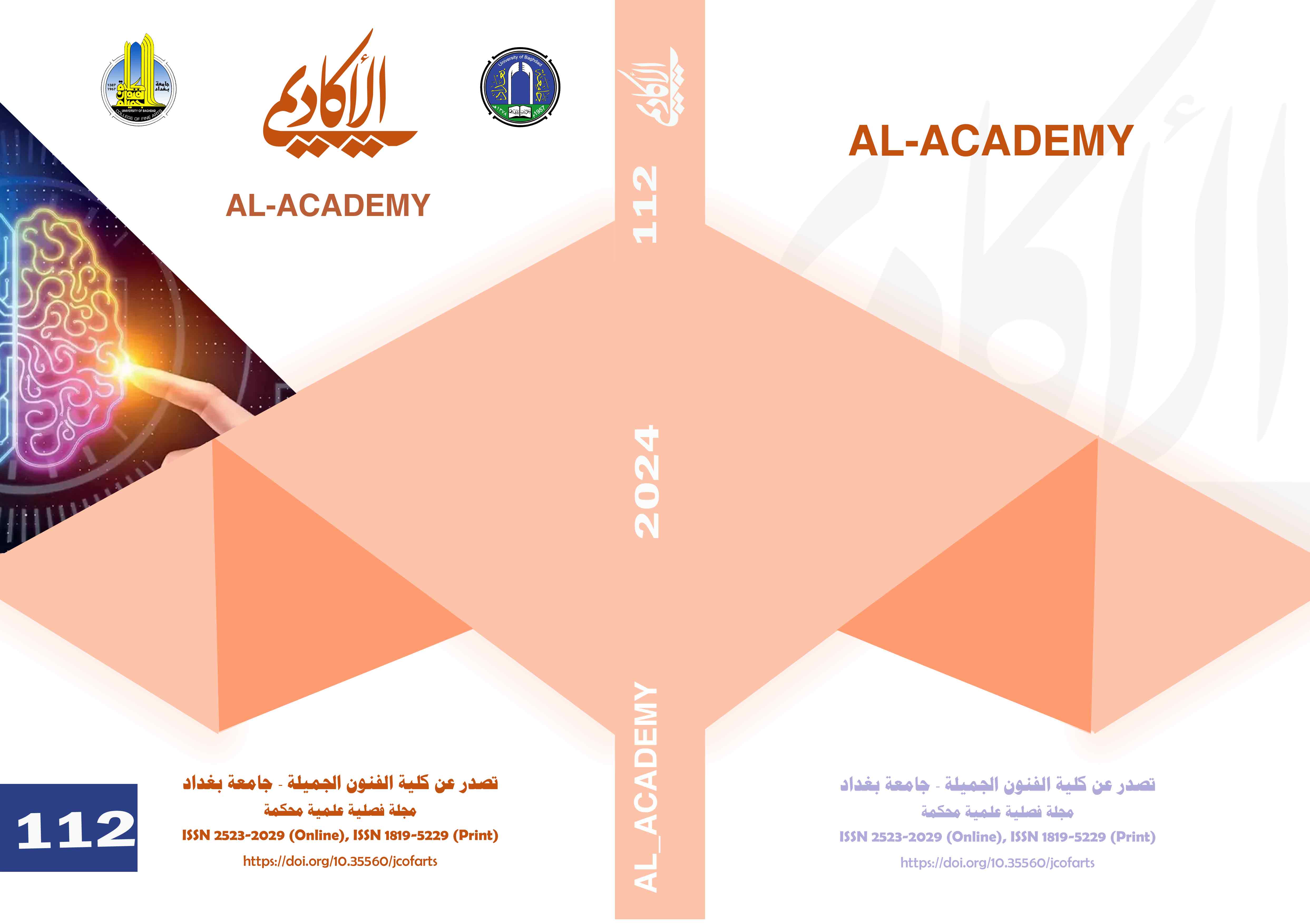Thinking of the Moving body in motion as the starting point for the fashion design
DOI:
https://doi.org/10.35560/jcofarts1401الكلمات المفتاحية:
نقطة تحرك الجسم ، الجسم المتحرك ، اليات التصميم ، تصميم الازياءالملخص
Blocks and garment patterns serve as visual depictions of the human form. Despite pattern cutting's inherent flexibility and adaptability, this discipline has continually chosen to design garments that conform to the body's stationary, upright posture. Although the deep-rooted paradigm has achieved many successes, the positions that the body takes when in motion are one of the main reasons why clothing pressure increases dramatically, leading to a feeling of discomfort. The objective of this work is to depict the human body as a dynamic entity by creating a mannequin that combines all the motions produced by the body on a daily basis.
The design of this methodology is based on qualitative methods, using techniques such as self-portraiture, theoretical sampling, visual somatometry, and body shape averaging. Subsequently, a collection of blocks was devised for standard articles of clothing crafted from woven fabrics. These blocks had 'distorted' shapes that conform to the curves and lines of the mobile human form, as mirrored by the mannequin. Ultimately, in order to verify the notion, the lady tested the muslin prototypes created from the designs by wearing them and confirmed that they exhibit the same expansion and contraction as the muscles and skin.
المراجع
Ashdown, S. P. (2011). Improving body movement comfort in apparel. In Improving comfort in clothing (pp. 278-302). Elsevier.
Bohm, D. (2015). The special theory of relativity. Routledge.
Branson, D. H., & Nam, J. (2007). Materials and sizing. Sizing in clothing: Developing effective sizing systems for ready-to-wear clothing, 264-276.
Denton, M. (1972). Fit, stretch, and comfort. Textiles.
Gazzuolo, E., DeLong, M., Lohr, S., LaBat, K., & Bye, E. (1992). Predicting garment pattern dimensions from photographic and anthropometric data. Applied Ergonomics, 23(3), 161-171.
Hassan, F. J. (2020). Hijab and Burqa in Islamic fashion system. Al-Academy(97).
Hassan, F. J. (2022). The design realation and the role of it making the idea for fashion design. Online Journal of Art and Design, 10(2).
[Record #256 is using a reference type undefined in this output style.]
Hussein, I. T. (2022). Decorative supplements and their role in fabric designs and women's fashion. Al-Academy(106), 5-22.
Hutchinson, R., & Munden, D. (1978). The Geometrical requirements of patterns for women's garments to achieve satisfactory fit: Part 2: The two dimensional requirements of women? s garments. Clothing Research Journal, 6(3), 119-129.
Ireland, R. D., Hoskisson, R. E., & Hitt, M. A. (2006). Understanding business strategy: Concepts and cases. (No Title).
Li, Y., Zhang, X., & Dai, X.-Q. (2006). Textile biomechanical engineering. In Biomechanical engineering of textiles and clothing (pp. 3-17). Elsevier.
Michl, J. (1995). Form follows WHAT. The modernist notion of function as a carte blanche, 1(50), 20-31.
Sandelowski, M. (1995). Sample size in qualitative research. Research in nursing & health, 18(2), 179-183.
Simoes, I. (2013). Viewing the mobile body as the source of the design process. International Journal of Fashion Design, Technology and Education, 6(2), 72-81.
Watkins, S. M. (1985). Clothing: The portable environment.
Yaseen, R. H. (2023). The influences of fashion on the design of fabrics and fashion at the time of contemporary social transformations. Al-Academy, 631-640.
韩燕丽, 郭雨齐, 田莹, & 董晶. (2015). 学术期刊和学术图书出版的融合. 科技与出版(12), 43-45.
التنزيلات
منشور
إصدار
القسم
الرخصة
الحقوق الفكرية (c) 2024 furat jamal hassan

هذا العمل مرخص بموجب Creative Commons Attribution 4.0 International License.
















